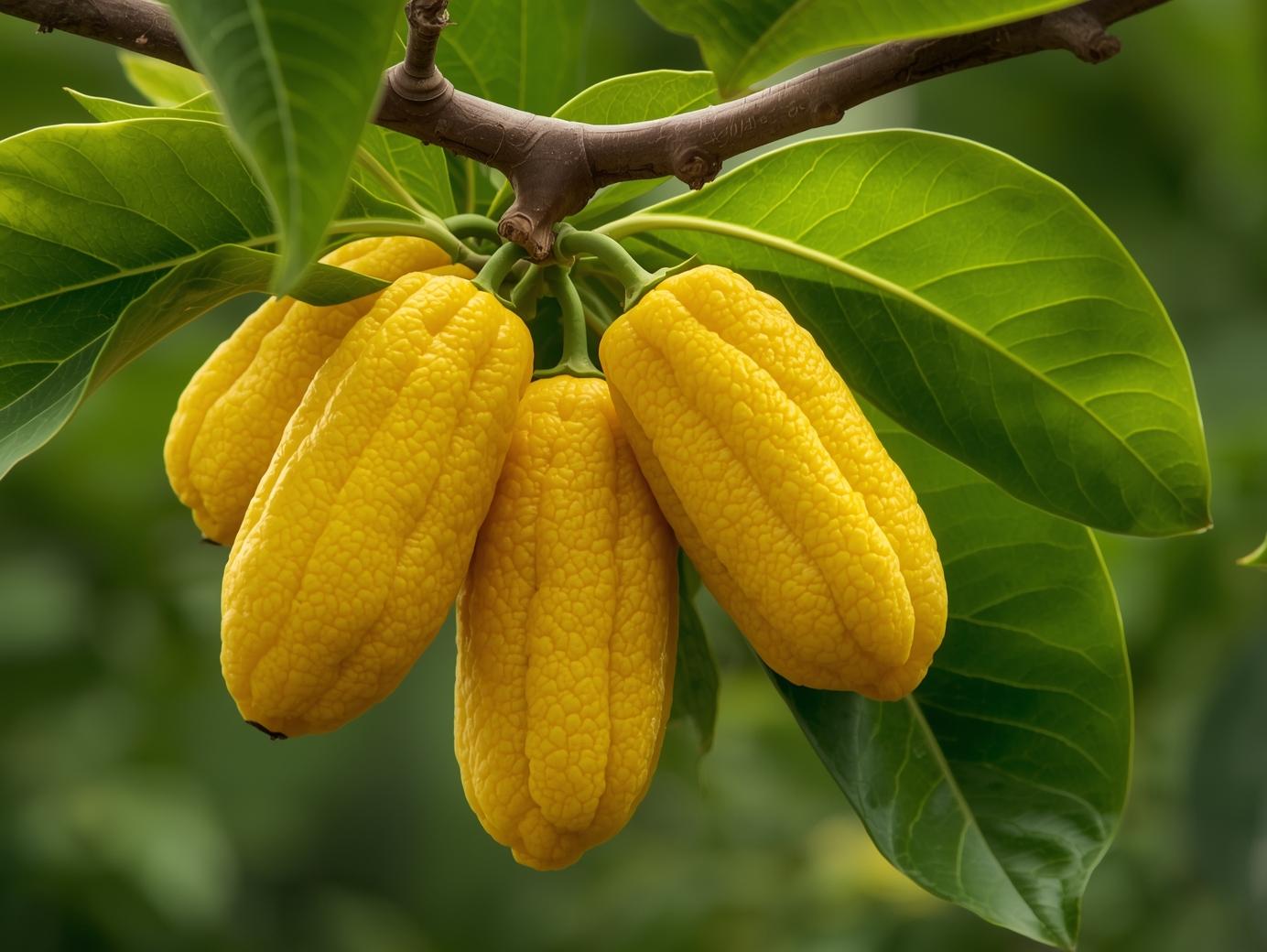Buddha’s Hand, also known as the Fingered Citron, is one of the most unique and exotic citrus plants you can grow in your home courtyard. Its striking, finger-like fruit is not only visually captivating but also prized for its strong, sweet fragrance and ornamental appeal. Unlike most citrus fruits, Buddha’s Hand contains no juice or pulp, making it ideal for use as a natural air freshener, in candied recipes, or as a zesty addition to cocktails and desserts.
In the USA, Buddha’s Hand thrives best in warm, Mediterranean-style climates such as California, Florida, and parts of Texas and Arizona. However, it can also be grown in containers and moved indoors during cold winters in cooler regions. With the right care, this unusual citrus plant can become a centerpiece of your courtyard garden, combining elegance with practicality.
Soil Selection
Buddha’s Hand citrus trees prefer well-drained, slightly acidic soil rich in organic matter. A loamy or sandy soil type is ideal, as it provides good aeration while retaining enough moisture for steady growth. The optimal soil pH range for this plant is between 5.5 and 6.5, which supports nutrient uptake and healthy root development. Poorly drained or compacted soil should be avoided since excessive water retention can cause root rot.
Before planting, perform a soil test to assess nutrient levels and adjust the pH if necessary. Incorporating organic compost or aged manure enhances soil fertility and structure. In container gardening, use a high-quality citrus potting mix to ensure proper drainage and nutrient availability. Healthy, well-balanced soil provides the foundation for a thriving Buddha’s Hand tree with vibrant foliage and abundant fruit.
Site Preparation
Choosing the right location is vital for growing Buddha’s Hand successfully. Select a sunny spot in your courtyard that receives at least six to eight hours of direct sunlight daily. These trees thrive in warm, sheltered environments, so positioning them against a south-facing wall or near a reflective surface can help maximize light exposure and warmth. Proper air circulation is also important to prevent fungal diseases and promote vigorous growth.
Prepare the site by clearing away weeds, debris, and stones that might compete with the young tree for nutrients. Loosen the soil to a depth of at least 18 inches and incorporate organic matter such as compost or well-rotted manure. If you live in a cooler region, growing Buddha’s Hand in a large container is a practical choice, allowing you to move the plant indoors or into a greenhouse during colder months.
Planting
The best time to plant Buddha’s Hand in most parts of the USA is during spring when the danger of frost has passed. Choose a healthy, grafted plant from a reputable nursery, as grafted trees tend to be more disease-resistant and productive. Dig a hole twice as wide and just as deep as the root ball to allow ample room for root expansion.
Position the plant in the hole so that the top of the root ball is level with the soil surface. Backfill with the excavated soil, pressing it gently around the roots to remove air pockets. Water the newly planted tree thoroughly to help it settle. When planting multiple trees, maintain a spacing of 10 to 12 feet to ensure proper sunlight and airflow. Container-grown trees should be planted in pots with drainage holes to prevent excess moisture buildup.
Watering
Consistent watering is essential for establishing Buddha’s Hand trees, especially during the first two years after planting. The soil should remain evenly moist but never waterlogged. Deep watering once or twice a week is recommended to encourage deep root growth and resilience during dry periods. Overwatering can lead to root rot and yellowing leaves, so allowing the top few inches of soil to dry before watering again is crucial.
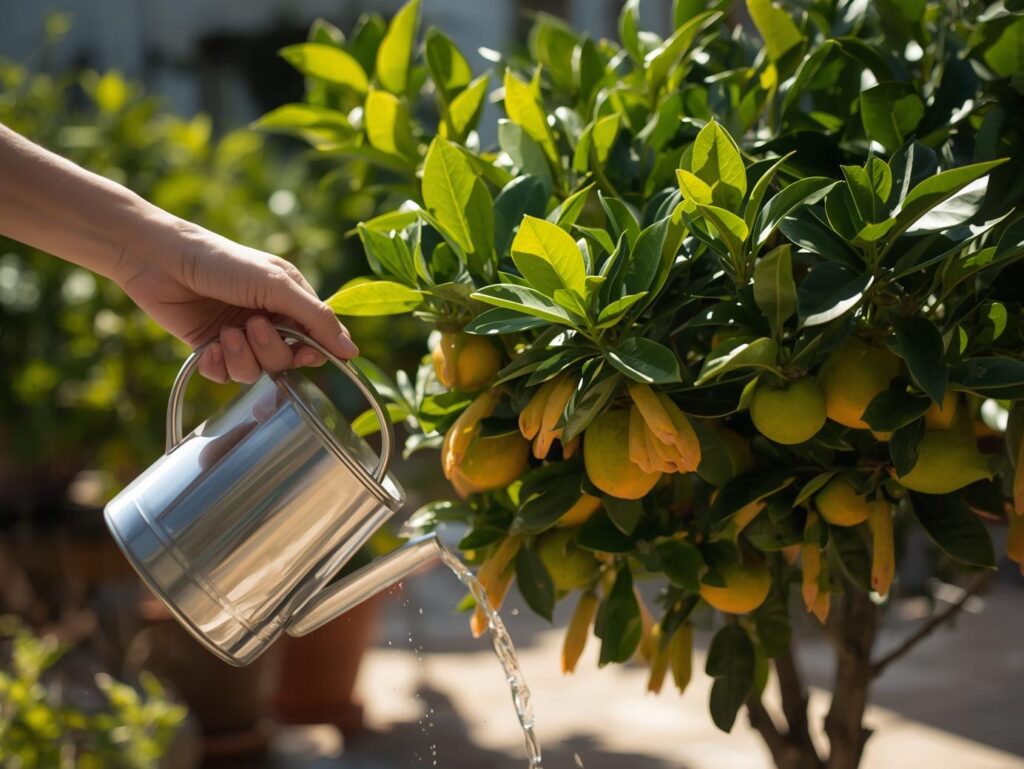
During hot summer months or in regions with low humidity, increasing the watering frequency helps maintain steady growth and fruit production. Applying a layer of organic mulch around the base of the tree conserves moisture, moderates soil temperature, and suppresses weed growth. Mature Buddha’s Hand trees are relatively drought-tolerant but still benefit from occasional deep watering during extended dry spells.
Fertilizing
Buddha’s Hand trees require regular feeding to maintain healthy growth and consistent fruiting. Apply a balanced citrus fertilizer with nitrogen, phosphorus, and potassium in early spring as new growth begins. Nitrogen supports lush foliage, while phosphorus and potassium contribute to strong root development and vibrant fruit. Repeat applications every six to eight weeks during the growing season, tapering off in late fall.
Organic fertilizers such as compost, worm castings, or fish emulsion are excellent natural alternatives that improve soil fertility and microbial activity. Avoid over-fertilizing, as excessive nitrogen can cause rapid leaf growth at the expense of flowers and fruit. Regular soil testing ensures that your fertilizer applications remain balanced and suited to the tree’s specific nutritional needs.
Pruning & Training
Pruning Buddha’s Hand trees helps maintain shape, improve airflow, and encourage productive flowering. The best time to prune is in late winter or early spring before new growth begins. Remove dead, diseased, or crossing branches to prevent overcrowding and improve light penetration into the canopy. Light pruning during the growing season can also help maintain an attractive, compact shape, especially in courtyard or container settings.
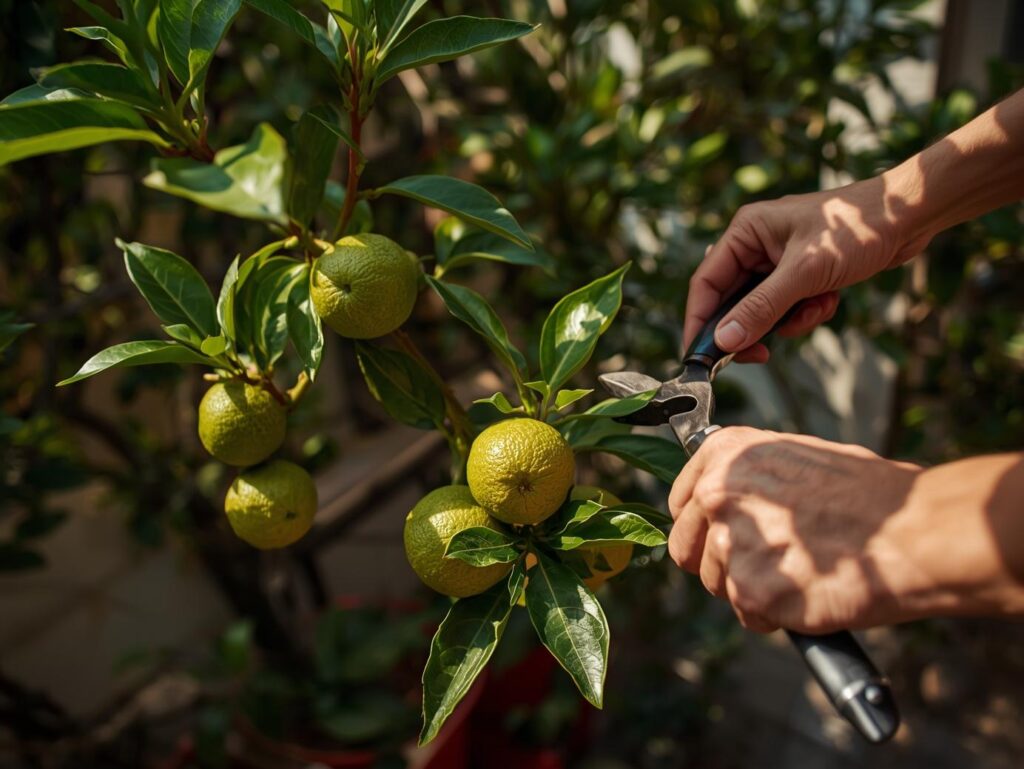
Training young Buddha’s Hand trees early promotes strong structural growth. Choose a single central leader with evenly spaced lateral branches for optimal stability. Mature trees benefit from occasional thinning to prevent excessive density, which can harbor pests and reduce fruit quality. Proper pruning and training ensure that your Buddha’s Hand remains both beautiful and fruitful throughout its life.
Pest & Disease Control
Buddha’s Hand trees are susceptible to common citrus pests such as aphids, scale insects, spider mites, and citrus leaf miners. Regular monitoring allows for early detection before infestations become severe. Natural pest control methods, including neem oil, horticultural oils, or insecticidal soap, can effectively manage pests without harming beneficial insects or pollinators.
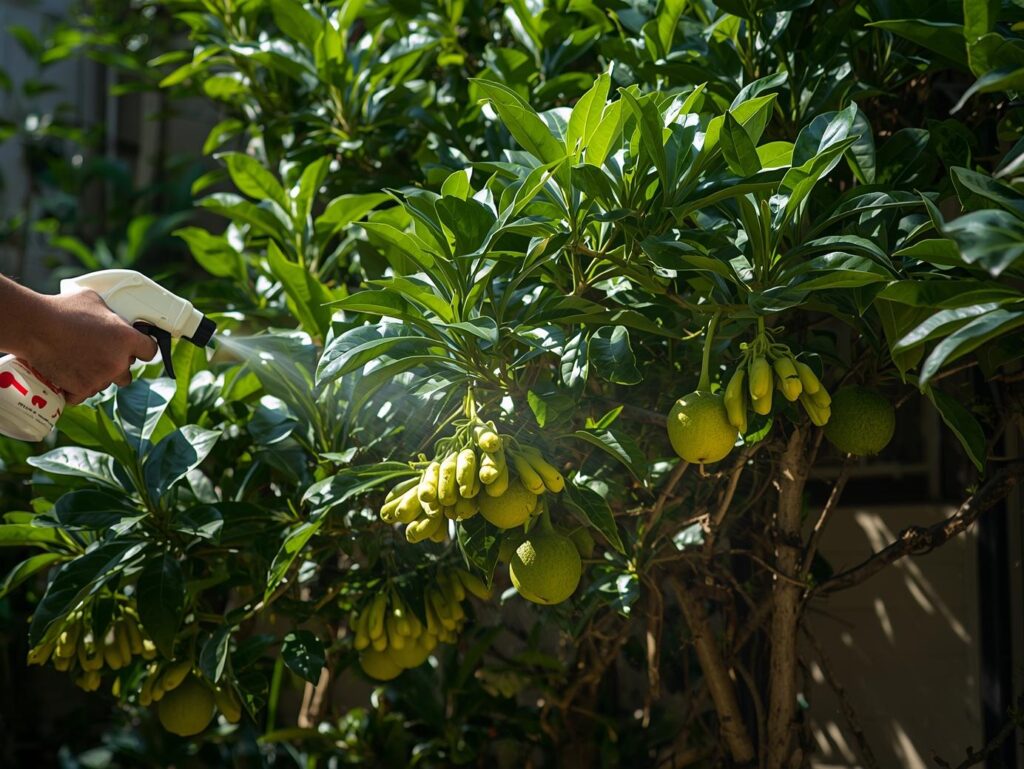
Diseases like root rot, sooty mold, and citrus canker can also affect Buddha’s Hand trees if conditions are too humid or poorly drained. Ensuring good air circulation, proper watering practices, and routine pruning minimizes these risks. Removing fallen leaves and debris around the tree base further prevents the buildup of pathogens. Healthy maintenance practices are the best defense against pests and diseases in your courtyard garden.
Fruiting & Harvest
Buddha’s Hand trees typically begin to bear fruit within three to five years of planting. The fruit starts green and gradually turns bright yellow as it matures, usually between late fall and early winter. Unlike most citrus fruits, Buddha’s Hand does not contain pulp or juice, but its peel and zest are highly aromatic and versatile in culinary and decorative uses.
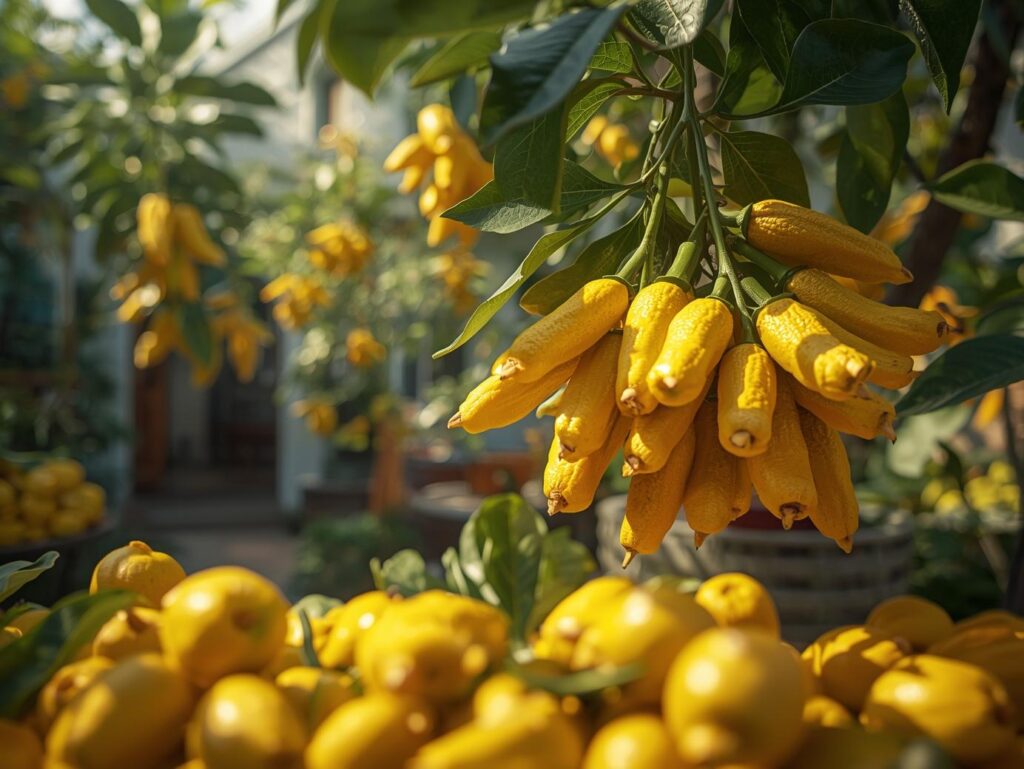
Harvest the fruit when it has fully developed its characteristic finger-like shape and rich golden color. Handle it gently to avoid bruising or damaging the fragrant skin. Freshly harvested Buddha’s Hand can be stored at room temperature for several weeks, filling your home with a sweet, lemony fragrance. Beyond its ornamental beauty, it can be used to make candied citrus, infused spirits, and desserts, adding a touch of luxury to your homegrown harvest.
